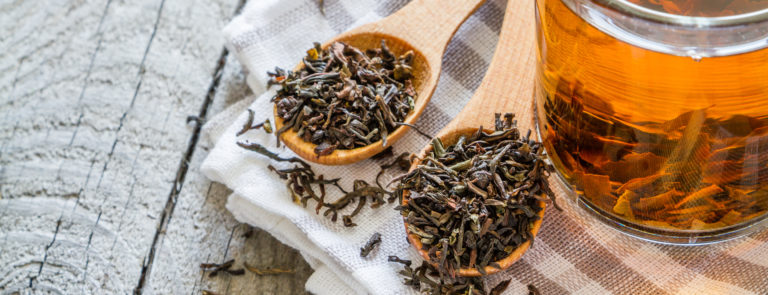15% off £20
Code:TREAT
Black tea benefits

Although it may not be as popular with the health-conscious as green tea, black tea actually hold many benefits of it's own. Find out more here!
Black tea is one of the world’s most popular beverages. Countries including Britain, Egypt, China and Turkey all consider tea-drinking a staple of their national identity.
Perhaps due to its traditional character, black tea is less popular with the health-conscious as brews like green and matcha have become more fashionable.
However, black tea’s relatively low caffeine content (in comparison with coffee and matcha) means that we shouldn’t dismiss a traditional cup of char.1
In this article, we’ll look at the various uses for black tea. Then, we’ll investigate how black tea can benefit you and advise who should avoid this brew.
Black tea uses
Black tea has long been used as herbal medicine, and many tea drinkers self-report that a good cup of tea has therapeutic properties.2 In Japan, the tea ceremony is an important Zen Buddhist ritual, which encourages meditation in daily life.3 In Britain, it’s common to offer someone a cup of tea when they’re hurt, upset, or shocked.Is black tea hydrating?
Tea contains caffeine, one of the most common stimulants in the world.4 Many people consider caffeine to be dehydrating because caffeine is a diuretic which encourages you to urinate more frequently.5 However, despite popular perception, you’d have to drink around ten cups of tea to experience increased urination.6 One scientific study went further and showed tea has the same hydration benefits as water – as long as you drink no more than six cups.7When to avoid black tea
Go easy on tea if you suffer from anxiety – tea’s caffeine content means it’s associated with increased nervousness for some individuals.8 People with iron or anaemia should also be conscientious that tea negatively impacts the body’s ability to absorb iron.9Black tea alternatives
Tea is the world’s most popular drink, and around 6 billion cups are drunk a year10 – in many more varieties than the traditional British black tea. Here are some global alternatives that are different from black tea as we know it:- Oolong tea. Oolong is made from black and green tea leaves but isn’t as oxidized once picked, making a blue-toned brew.11
- Matcha green. Matcha is a kind of green tea, first enjoyed in 7th century China. Matcha was exported to Japan in the 12th century, where it became the centrepiece of the country’s famous tea ceremony.12
- Yerba maté. Maté is a South American tea with a higher antioxidant content than green tea.13 Germans were early international adopters of maté and carbonated it to make popular tea-based fizzy drinks.14















